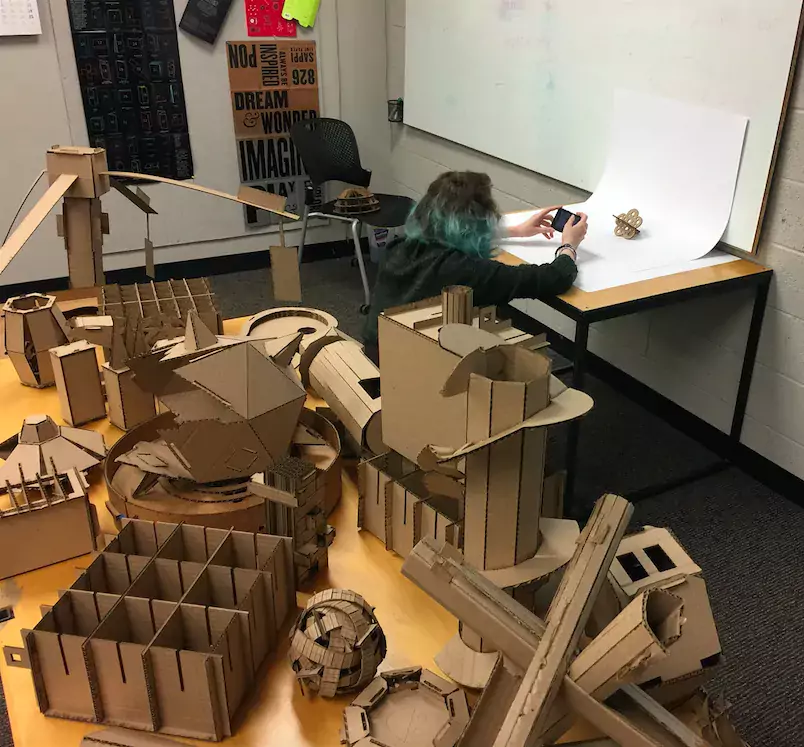
Special topics course creates enrichment items for Columbus Zoo and Aquarium

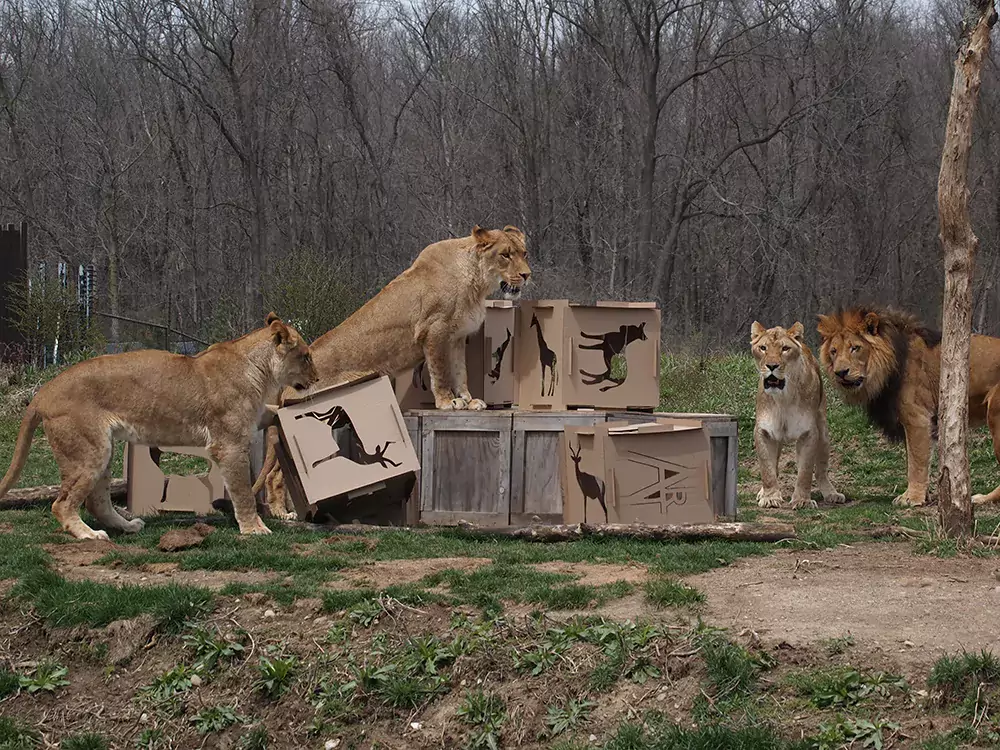
A new special topics course at Columbus College of Art & Design is proving that student art is for the birds—or the lions or bunnies or other wild animals at the Columbus Zoo and Aquarium.
Laser-Cut Cardboard Enrichment is led by Animation Chair and Associate Professor Charlotte Belland, who has some experience creating enrichment pieces for her furry friends at the Zoo.
Her first foray into designing an animal-friendly piece didn’t go quite as planned. She designed, built, and painted (with giraffe spots) a cardboard decahedron ball for the lions who reside in the Zoo’s Heart of Africa habitat.
“To build it was a nightmare,” she recalls, laughing. “It took 12 hours of work. They smashed it in seconds.”
Later that year, when she teamed up with the Zoo to create another enrichment object for the lions, she was better prepared to take on the challenge. This time, she built the lions a cardboard birthday cake, with candles painted on the sides.
In typical cat fashion, the lions swatted the thing apart and lounged on the pieces afterward.
“They ended up sitting in the boxes,” Belland says. “They loved it.”
The Zoo considers enrichment anything that engages an animal’s senses and fosters natural behavior, like foraging, wrestling, running, or swimming. For example, contra-feeding, which is the process of encasing an edible treat inside an object to entice the animal to work at getting the object open to eat what’s inside, is a popular enrichment activity for all animals. Just consider the tubular KONG® toys that dogs love. The simplest enrichment items are hard-to-eat foods, like pumpkins, watermelons, and coconuts, because they contain their own yummy reward.
“The Zoo works to the engage animals with a variety of enrichment programs throughout the year,” says Kelly Vineyard, the Zoo’s senior curator of animal care and the Australia and the Islands region. Popular events like Eggs, Paws and Claws brings enrichment items into the habitats for the animals—much to the enjoyment of the human guests who get to watch them interact with the items.
For CCAD’s special topics course, Belland’s students have worked closely with the Zoo’s Director of Theming & Interpretive Design Karen Huebel and the Zoo’s animal care staff to research, design, prototype, and present enrichment items to give to the animals during the Zoo’s Earth Day event, Party For the Planet™, which is taking place on April 21.
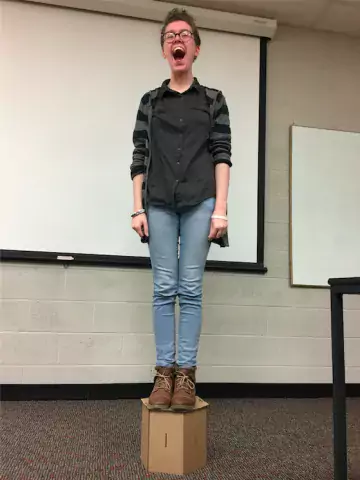
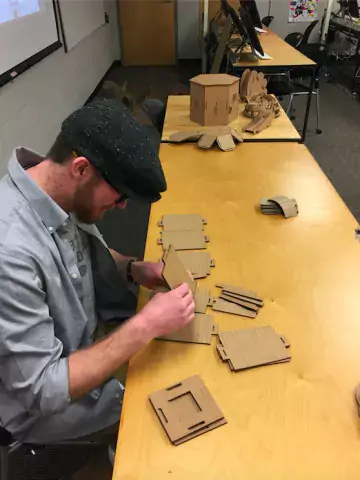

“Going into this class, I knew that a big challenge I would face was creating designs that both make sense and could be easily put together,” says Jenna Jewell (Animation, 2021), “all while keeping in mind that the designs would be made completely from cardboard. No glue, tape, staples, or paint.”
There are reasons for these restrictions. Materials are an important consideration of enrichment design, especially when it comes to exotic animals. Non-toxic paint and sturdy material must be used for large predators and herbivores, and toxic ingestible materials like plastic or vinyl are not allowed. While the class focuses on building cardboard and paper structures, the Zoo is also careful to limit these types of enrichment items to a few times a month, because these materials could otherwise potentially impact an animal’s digestion.
Once students gained an understanding of the Zoo’s material restrictions and why they were in place—as well as considerations for what different animals would want from a design—the real fun began.
One of Jewell’s initial prototypes was a file-cabinet-like structure for the rabbits in the Habitat Hollow Barn. Titled “File Under Rabbit,” it is meant to work similar to a trellis in which the rabbits can rest or hang out.
There are multiple short "files" to go in between each of the full length "folders." Some of the tabs on top of each "file" have nicknames written on them, like "Cutie" or "Fluffy,” while others have carrots cut and scored into the cardboard.
The design is rooted in research Jewell and her classmates conducted, gathered through interviews and collaborative sessions with the Zoo’s animal care specialists.
“The rabbits love tight spaces to squeeze into, so I started to think of something that would encourage this behavior, and I wanted it to be funny,” Jewell says. “Thus, ‘File Under Rabbit’ was created!”
Belland notes that Jewell’s design also considers the guests who will be visiting the rabbits; the design needed to allow for open space for guests to pet the rabbits if they wanted. This design keeps all the project “clients” happy, she says: The Zoo provides a safe environment for its rabbits, the guests have the opportunity to interact with them in a fun and memorable way, and the rabbits, of course, get to chill just the way they like.
“The students are becoming better artists and designers because this project is making them actively engage their research skills and apply that to the product. You can have a fabulous idea for a product on paper,” Belland says, hearkening back to her decahedron versus the more successful lion birthday cake, “but actually doing the work allows them to put the design into practice, modify a design to meet the current challenge, and learn how to finish a deliverable within the timeframe they have.”
Jewell, for example, had to devise second and third prototypes to create a simpler design because her initial work was too complex for the task at hand.
“You learn to work efficiently and collaboratively. It pushes [us] to think outside of the box and it helps build up our problem-solving skills,” Jewell says. “It’s always fantastic to see what designs or new ideas the other students and our professor come up with.”
The Zoo has been similarly happy with the process.
“We’re proud to collaborate with CCAD, and seeing the students’ projects come together was very exciting for our staff,” said Columbus Zoo President/CEO Tom Stalf. “Not only were the students provided with a unique learning opportunity, but the animals will also benefit by receiving these creative enrichment items to further enhance the great care they receive.”
Belland adds she hopes to continue the special topics course in the future.
“It’s a privilege for us to have this relationship and opportunity to work with the Columbus Zoo and Aquarium,” she says.
Not to mention, they have the cutest clients.
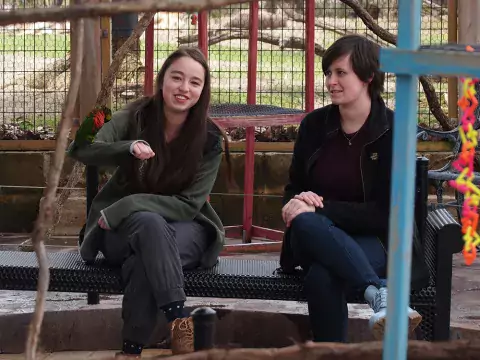
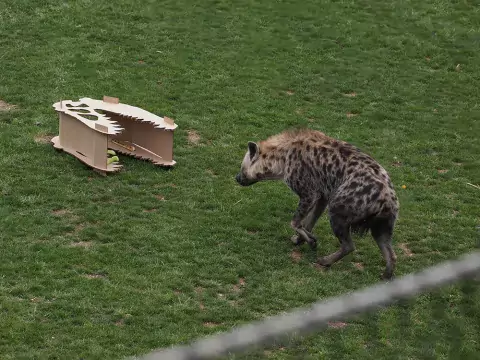
Post date
April 25, 2018